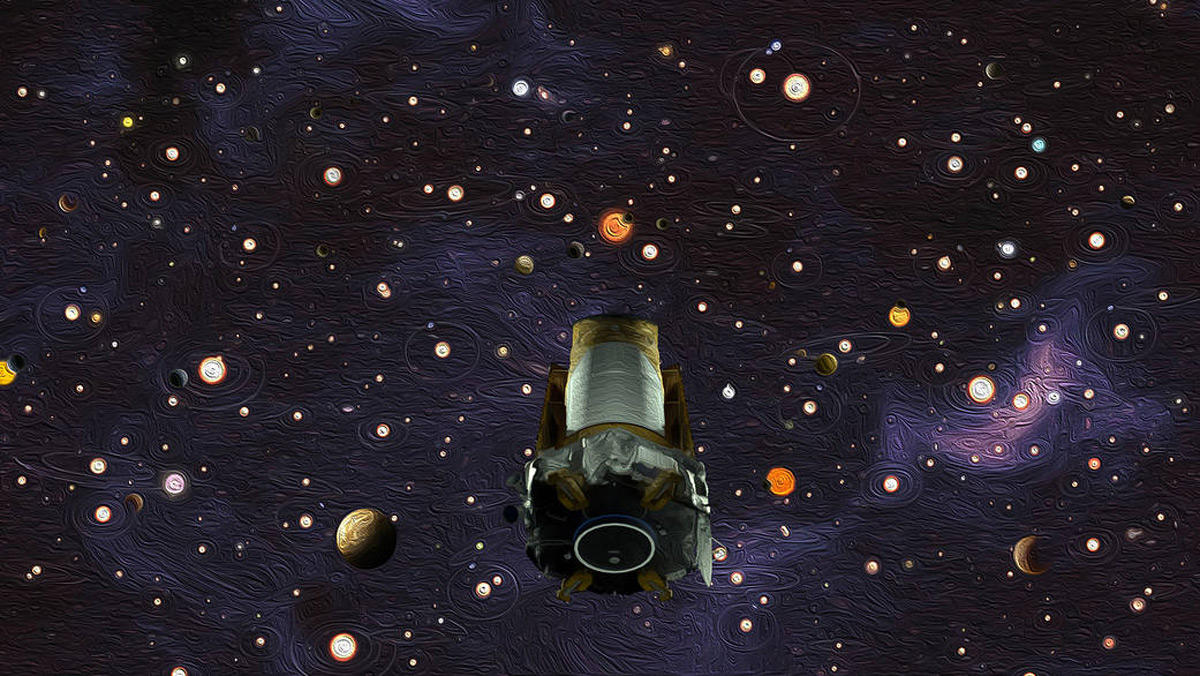
October 29, 2020, Mountain View, CA – Thanks to new research using data from the Kepler space telescope, it’s estimated that there could be as many as 300 million potentially habitable planets in our galaxy. Some could even be pretty close, with several likely within 30 light-years of our Sun. The findings will be published in The Astronomical Journal, and research was a collaboration of scientists from NASA, the SETI Institute, and other organizations worldwide.
“This is the first time that all of the pieces have been put together to provide a reliable measurement of the number of potentially habitable planets in the galaxy,” said co-author Jeff Coughlin, an exoplanet researcher at the SETI Institute and Director of Kepler’s Science Office. “This is a key term of the Drake Equation, used to estimate the number of communicable civilizations — we’re one step closer on the long road to finding out if we’re alone in the cosmos.”
The Drake Equation is a probabilistic argument that details the factors to consider when estimating the potential number of technologically advanced civilizations in the galaxy that could be detected. The Drake Equation is also often considered to be a roadmap for astrobiology and guides much of the research at the SETI Institute.
To develop a reasonable estimate, the researchers looked at exoplanets similar in size to Earth and thus most likely to be rocky planets. They also looked at so-called Sun-like stars, around the same age as our Sun and approximately the same temperature. Another consideration for habitability is whether the planet could have the conditions necessary to support liquid water.

Previous estimates about determining the number of potentially habitable exoplanets there are in our galaxy were heavily based on the planet’s distance from its star. This new research also considers how much light hits the planet from its star, which would impact the likelihood that the planet could support liquid water. To do this, the team looked not only at Kepler data, but also at data from the European Space Agency’s Gaia mission about how much energy the planet’s star emits.
By taking both Kepler and Gaia data into account, the results better reflect the diversity of stars, solar systems, and exoplanets in our galaxy.
“Knowing how common different kinds of planets are is extremely valuable for the design of upcoming exoplanet-finding missions,” said co-author Michelle Kunimoto, who worked on this paper after finishing her doctorate on exoplanet occurrence rates at the University of British Columbia, and recently joined the Transiting Exoplanet Survey Satellite, or TESS, team at the Massachusetts Institute of Technology in Cambridge, Massachusetts. “Surveys aimed at small, potentially habitable planets around Sun-like stars will depend on results like these to maximize their chance of success.”
More research will be needed to understand the role a planet’s atmosphere has on its capacity to support liquid water. In this analysis, researchers used a conservative estimate of the atmosphere’s effect to estimate the occurrence of Sun-like stars with rocky planets that could have liquid water.
The Kepler mission, which officially ceased collecting data in 2018, has identified over 2,800 confirmed exoplanets, with several thousand more candidates waiting to be confirmed. So far, researchers have identified several hundred planets in the habitable zone of their star in Kepler data. It may take a while to find all 300 million!

For more information:
https://www.nasa.gov/feature/ames/kepler-occurrence-rate
https://arxiv.org/abs/2010.14812
DOWNLOAD FULL PRESS RELEASE HERE.
About the SETI Institute
Founded in 1984, the SETI Institute is a non-profit, multi-disciplinary research and education organization whose mission is to lead humanity’s quest to understand the origins and prevalence of life and intelligence in the Universe and to share that knowledge with the world. Our research encompasses the physical and biological sciences and leverages expertise in data analytics, machine learning and advanced signal detection technologies. The SETI Institute is a distinguished research partner for industry, academia and government agencies, including NASA and NSF.
Contact information
Rebecca McDonald,
Director of Communications SETI Institute
189 Bernardo Ave., Suite 200
Mountain View, CA 94043
rmcdonald@seti.org
media@seti.org





